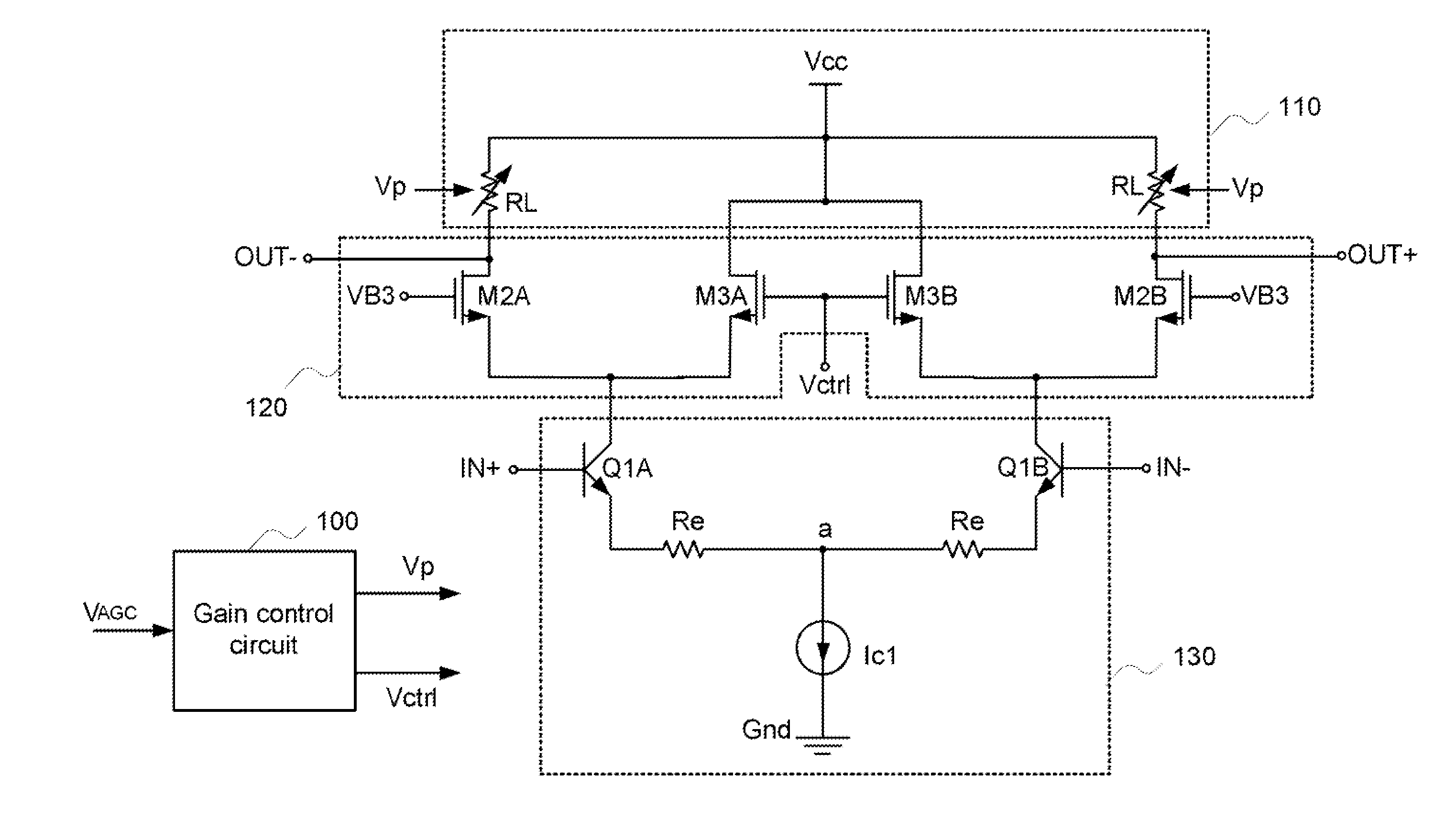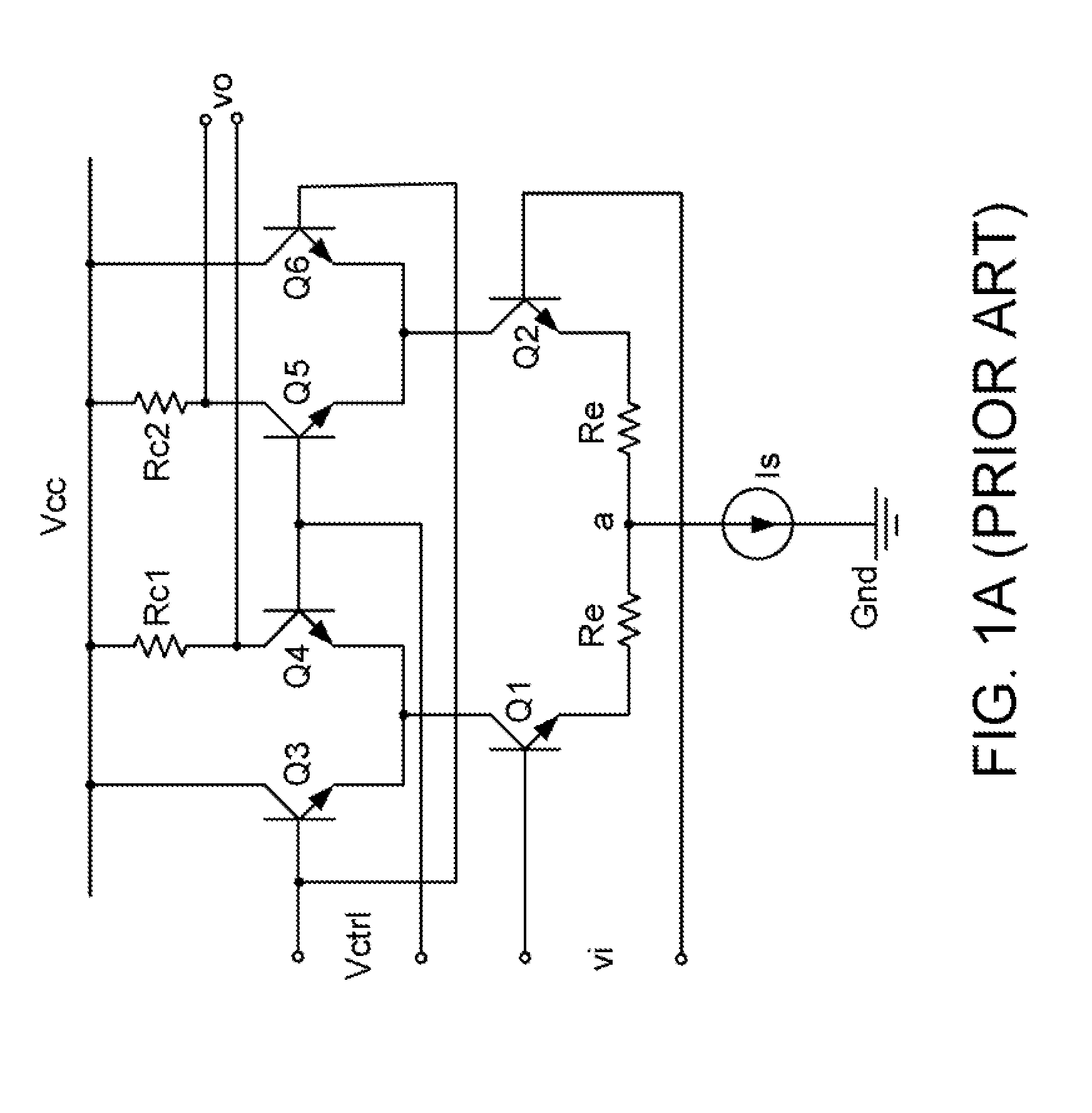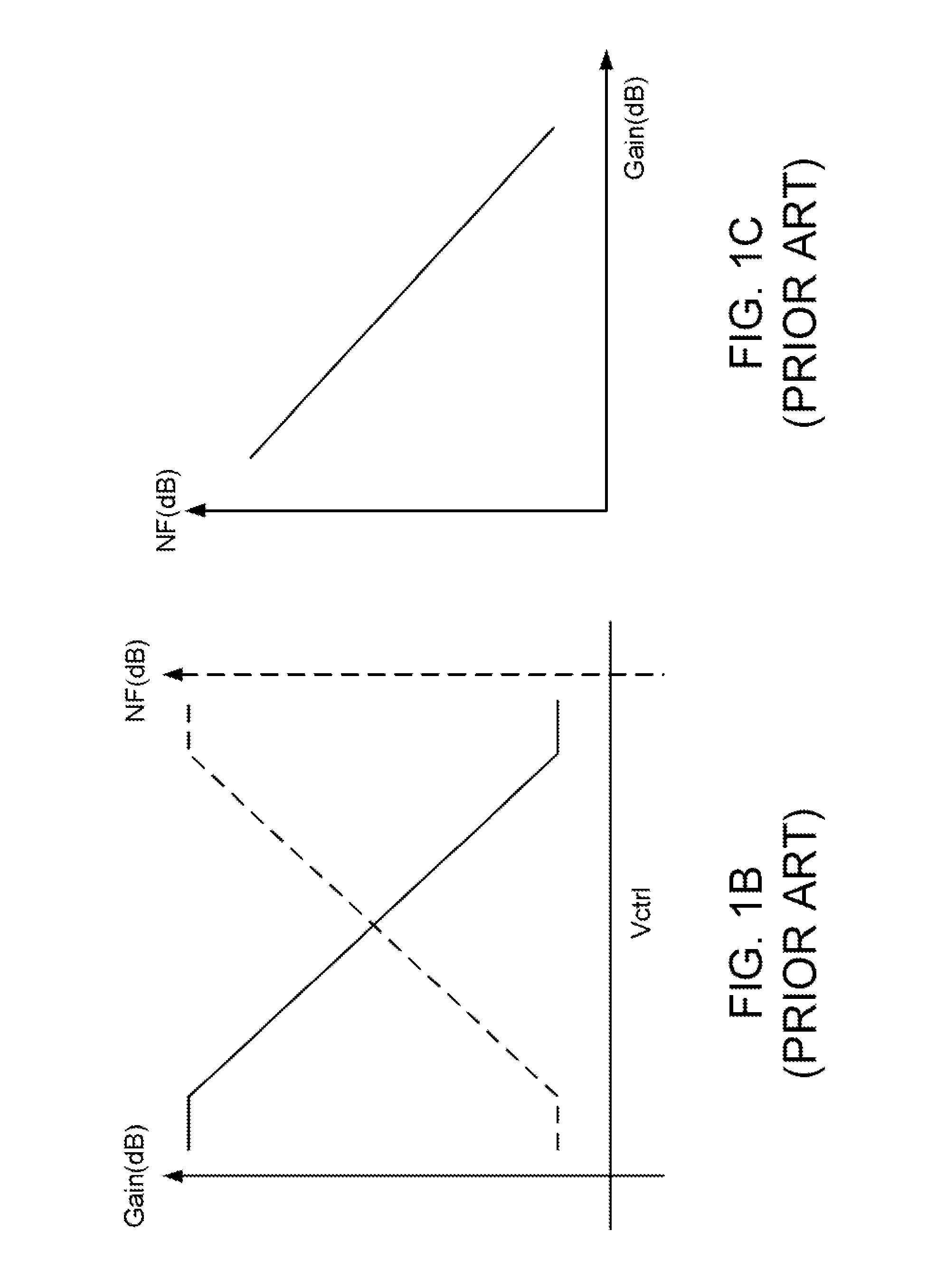Variable-gain low noise amplifier
a low-noise amplifier and variable-gain technology, applied in the direction of gain control, amplification control details, amplification control device circuits, etc., can solve the problems of deteriorating the linearity of the amplifier, affecting the signal, and sometimes greater interference and noise than the useful signal
- Summary
- Abstract
- Description
- Claims
- Application Information
AI Technical Summary
Problems solved by technology
Method used
Image
Examples
first embodiment
[0031]FIG. 3B is a schematic circuit diagram illustrating a highly linear variable-gain low noise amplifier according to the present invention. The input circuit 130 comprises a first bipolar junction transistor (BJT) Q1A, a second bipolar junction transistor Q1B, two emitter resistors Re and a first current source Ic1. The first bipolar junction transistor Q1A and the second bipolar junction transistor Q1B are connected with each other to define a differential pair. The bases of the first bipolar junction transistor Q1A and the second bipolar junction transistor Q1B are used as the differential signal input terminals (IN+, IN−) of the amplifier. The first terminal of the two emitter resistors Re are respectively connected to the emitters of the first bipolar junction transistor Q1A and the second bipolar junction transistor Q1B. The second terminals of the two emitter resistors Re are collectively connected to a node “a”. The first current source (Ic1) is interconnected between the...
second embodiment
[0037]FIG. 3C is a schematic circuit diagram illustrating a highly linear variable-gain low noise amplifier according to the present invention. In comparison with FIG. 3B, the amplifier of FIG. 3C further comprises a second current source Ic2 and a third current source Ic3. The second current source Ic2 is interconnected between the voltage source Vcc and the collector of the first bipolar junction transistor Q1A. The third current source Ic3 is interconnected between the voltage source Vcc and the collector of the second bipolar junction transistor Q1B. The first current source Ic1, the second current source Ic2 and the third current source Ic3 may provide DC bias voltages to all transistors of the amplifier. As a consequence, the amplifier may be operated at a proper quiescent point. Moreover, the small signal model of the amplifier is not influenced by the first current source Ic1, the second current source Ic2 and the third current source Ic3.
[0038]From FIGS. 3B and 3C, the volt...
PUM
 Login to View More
Login to View More Abstract
Description
Claims
Application Information
 Login to View More
Login to View More - R&D
- Intellectual Property
- Life Sciences
- Materials
- Tech Scout
- Unparalleled Data Quality
- Higher Quality Content
- 60% Fewer Hallucinations
Browse by: Latest US Patents, China's latest patents, Technical Efficacy Thesaurus, Application Domain, Technology Topic, Popular Technical Reports.
© 2025 PatSnap. All rights reserved.Legal|Privacy policy|Modern Slavery Act Transparency Statement|Sitemap|About US| Contact US: help@patsnap.com



